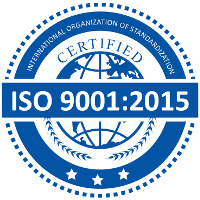American Journal of Food Science and Nutrition (AJFSN)
Nutritional quality of Solanum aethiopicum L. Shum berry as affected by agroecological zones of production
(This article belongs to Vol - 03, Issue - 01)
Download [ 483 ]
Abstract
Solanum aethiopicum L. Shum (SAS) berries are consumed either raw or as in the form of a tea. This work was performed to study the chemical composition and microbial load of SAS berry harvested from five agroecological zones in Cameroon. The results showed that, berries freshly harvested from all the five agroecological zones were highly contaminated by microorganisms. Berries from the highlands and bimodal rainfall forest zones had a higher rate of contamination, while they were less contaminated in the sudano-sahelian zone. The berries were cleaned with sodium hypochlorite eliminating them from pathogenic microorganisms. The agroecological zones influenced the chemical composition of the SAS berries (P < 0.05), with exception of proteins and lipids (P > 0.05). These berries were more concentrated in the Sudano-sahelian zone and more hydrated in the monomodal rainfall forest zone. However, carbohydrates were the most abundant macronutrient irrespective of the place of production, bitter taste of berries is probably determined by their phytonutrients. Mineral salts such as calcium, magnesium, potassium varied following the agroecological zones, as well as trace-elements like zinc and manganese (P < 0.05), Compared to the iron which reminded unchanged irrespective of the place of production (P > 0.05). These results suggested that the chemical composition and microbial load of SAS depended on the agroecological zones, while confirming their richness in important nutrients.ISO CERTIFIED

American Journal of Food Science and Nutrition (AJFSN)
ISSN 2212-7866
Published by SDIP, London, United Kingdom.

